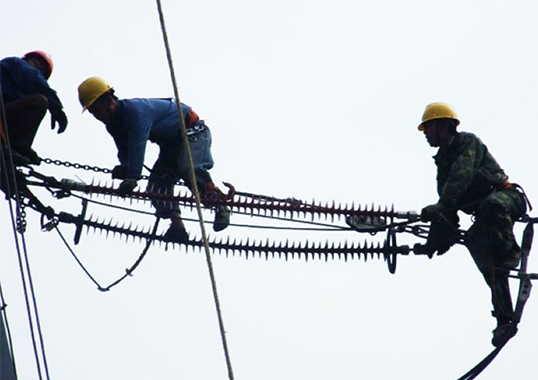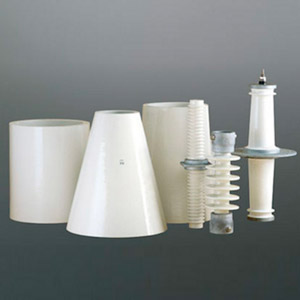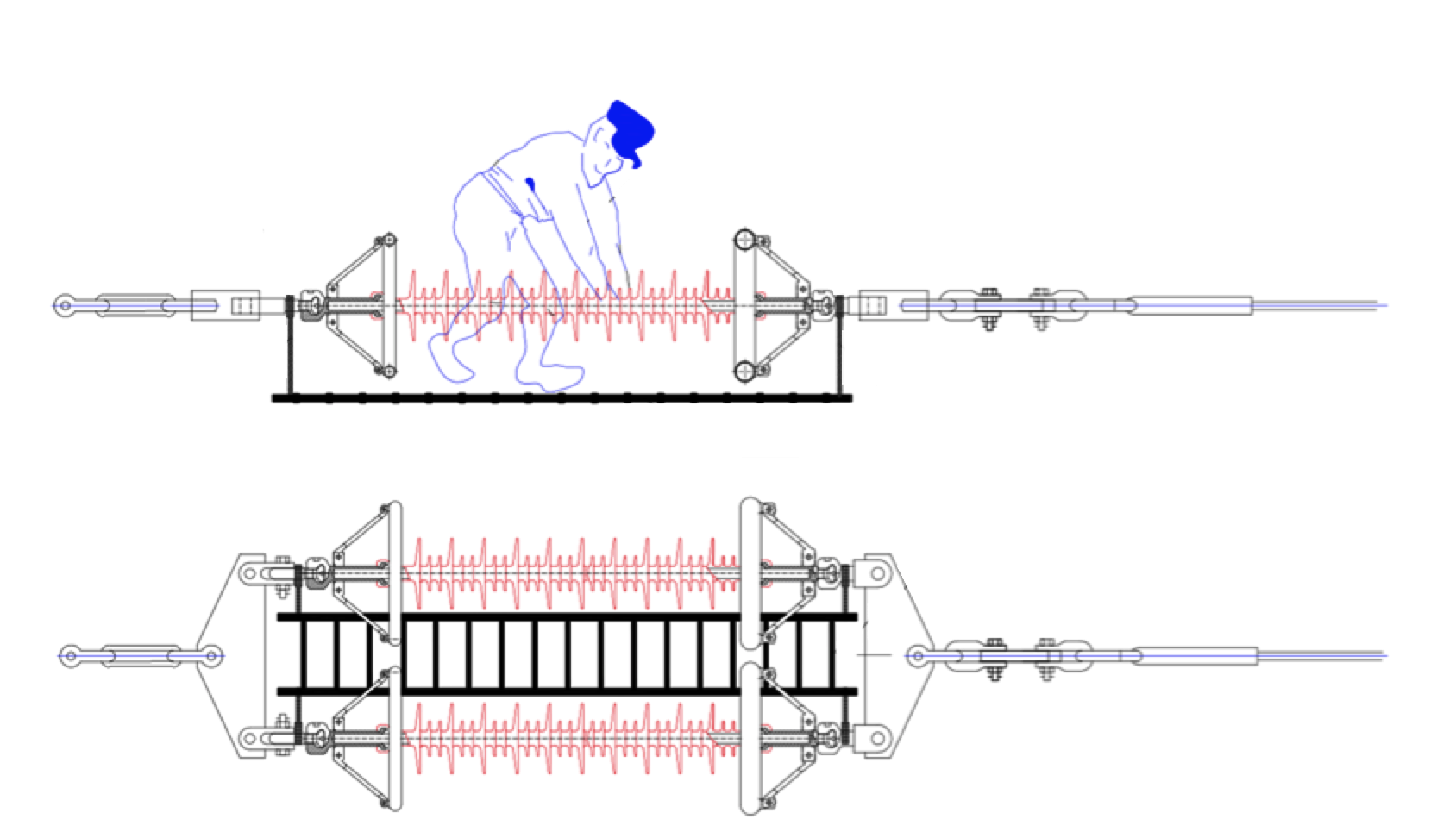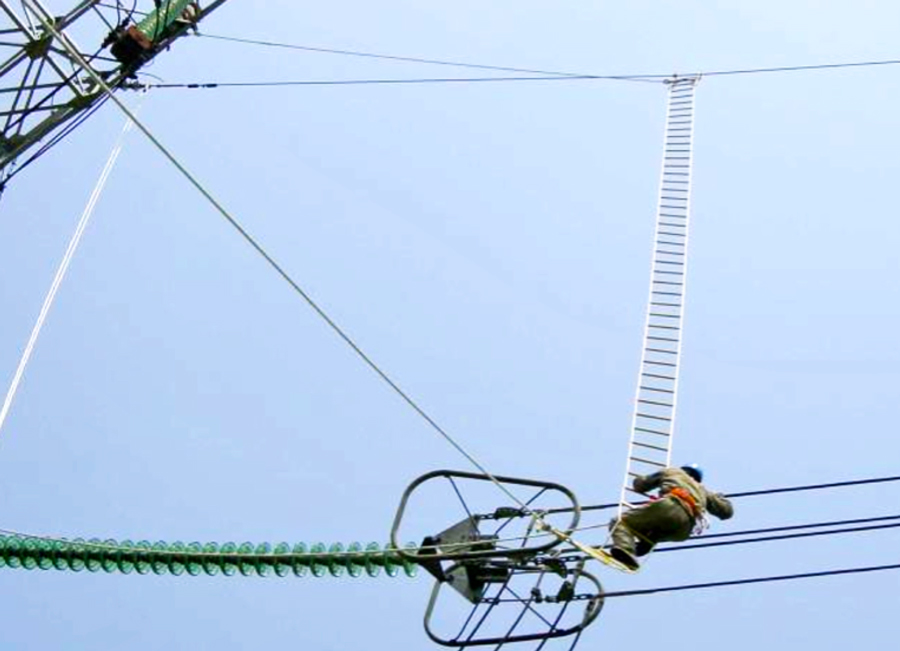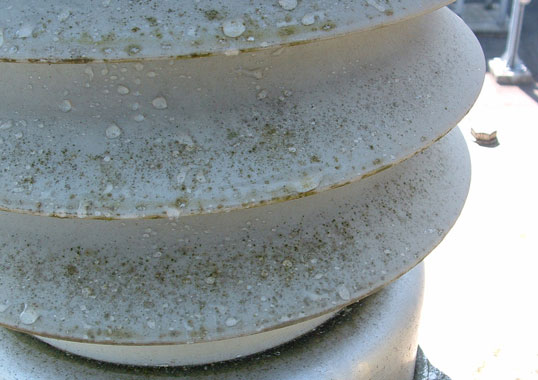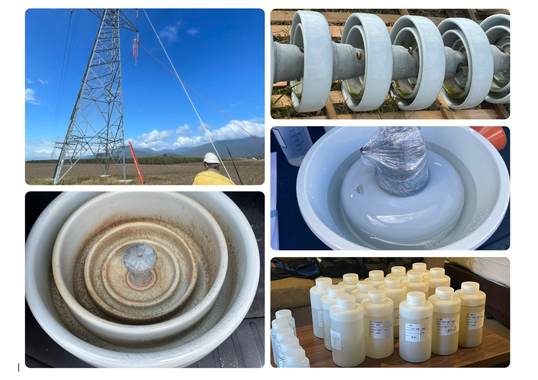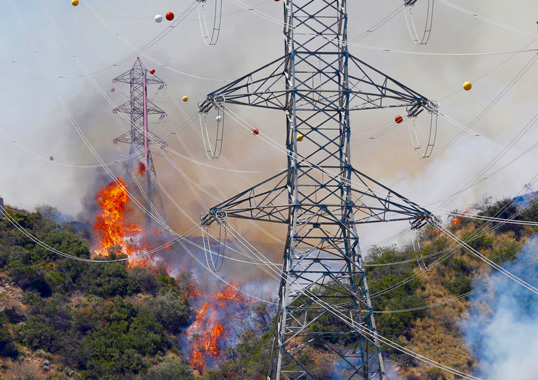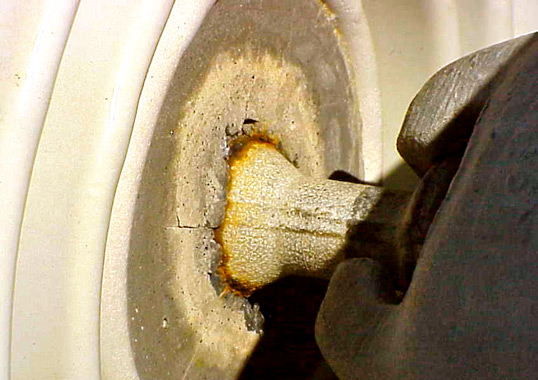If one looks at the hundreds of transmission lines built in China over the past 15-20 years, one of the most striking aspects of design is the widespread application of composite insulators. This is evident right across the country – from the windswept deserts and plains of the northwest to the green hills in the tropical southeast.
However, an equally striking feature of these lines is that dominance by composite insulators applies mainly to suspension strings. When it comes to tension towers, especially at higher transmission voltages, the first choice of Chinese utilities has remained either glass or porcelain string insulators, often pre-coated with RTV silicone material.
Several years ago, INMR met engineering staff at the China Southern Power Grid to uncover the factors behind this situation.
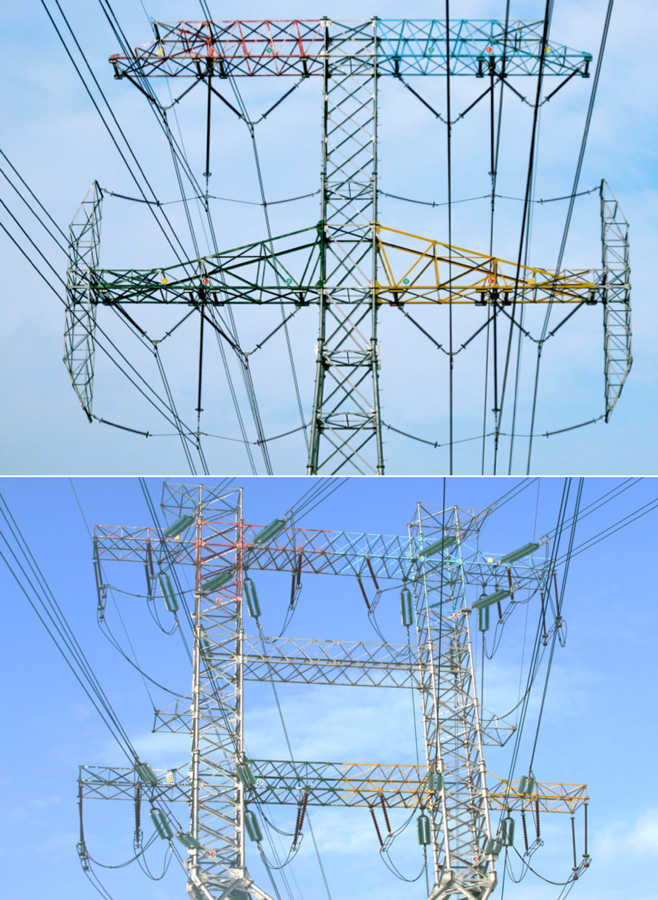
The current widespread popularity of composite insulators in China has come mostly from the fact that they do not require cleaning over their entire service lives. This stands in sharp contrast to porcelain and glass insulators, which local laws have mandated must be cleaned at least once a year in areas of medium to heavy pollution. Since cleaning has typically been performed by workers using rags, lines first had to be de-energized – increasingly difficult to accomplish given the massive energy demands of the country. Another problem has been that quality of cleaning was often inconsistent, leaving some insulator strings with an uneven pollution layer.
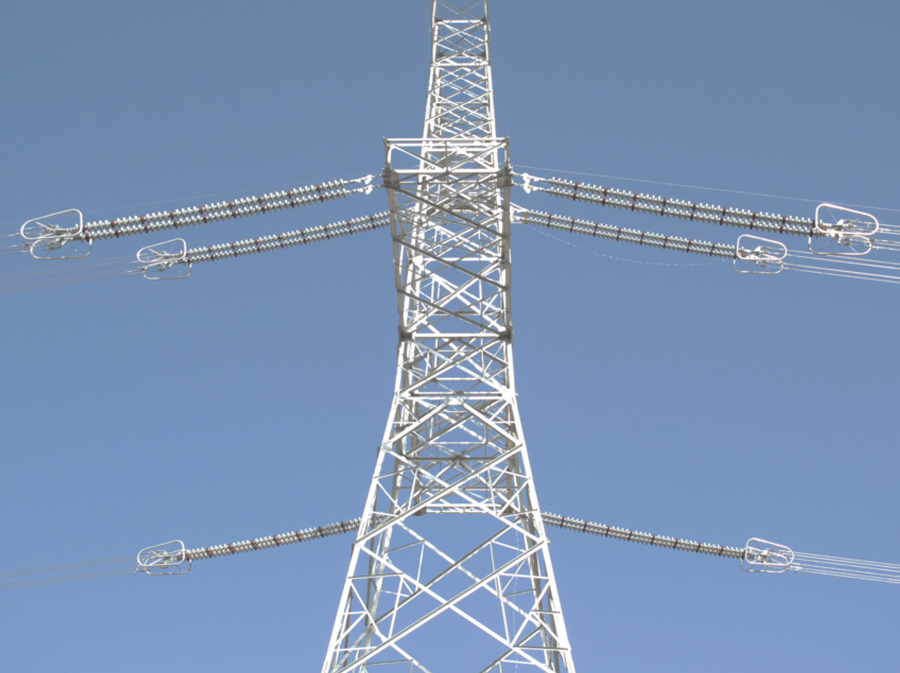
Yet for all of the benefits composite insulators offer from the perspective of superior pollution performance, most Chinese utilities have focused application of this technology only on suspension strings. For example, of the total population of suspension strings on 110 kV, 220 kV and 500 kV lines in the province of Guangdong 15 years ago, 85 percent were composite versus 14 percent glass and only 1 percent porcelain. However, when it came to tension applications, only 30 percent of all the tension strings were composite type compared to 61 percent glass and 9 percent porcelain. Moreover, the proportion of composite tension insulators at the time fell to only 11 percent for 220 kV lines and less than 1 percent in the case of 500 kV lines.
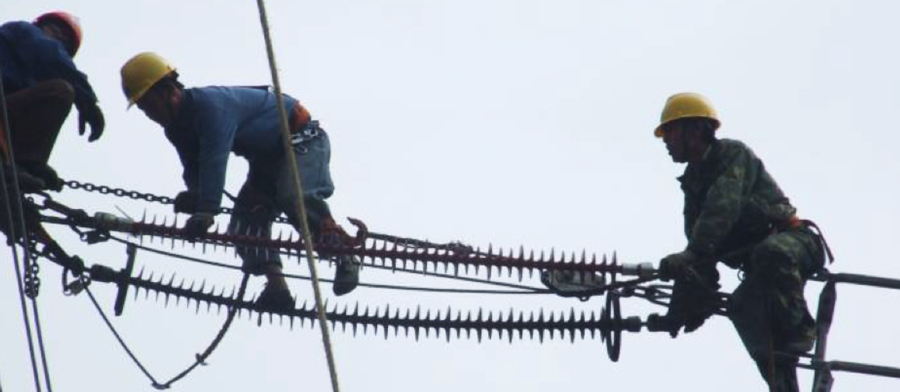
According to engineering staff with the China Southern Power Grid, reluctance to employ composite insulators in tension strings has related less to concern about mechanical performance and more to ease of access to the conductor. Regulations in China forbid workers from walking across a composite insulator to carry out repairs to conductors and line hardware since there is a perceived risk that this might permanently deform the sheds. Indeed, the Province’s Insulator Selection Guide at one time specifically stated that composite insulators were not suitable for use on tension strings.
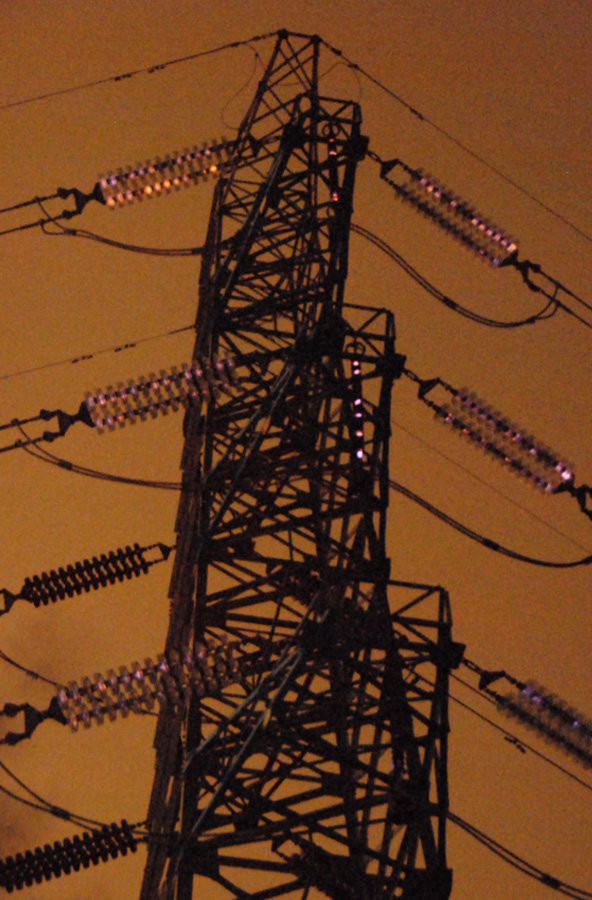
However, this policy soon came under growing scrutiny and new proposals on adjusting creepage to avoid pollution flashovers on Guangdong’s power network were already suggesting that it was not reasonable to restrict application of composite insulators on tension strings.
In fact, the first application of composite tension insulators on the province’s transmission system already started when about sixty 300 kN units were installed, alongside glass insulator strings, on tension towers of a 500 kV line running near the sea. This early application predated the insulator Guide’s restrictions and signalled growing confidence in such insulators due to improved manufacturing techniques, especially in regard to sealing the critical interface between end fitting and core rod. Once debate began on whether to expand application of composite insulators on HV and EHV tension strings, these same early installed insulators provided a handy reference to monitor whether performance had changed over time in tension applications.
Four years after being put into service, 6 of these units were selected at random and taken down for testing. Hydrophobicity measurements revealed that while hydrophobicity at the live end had decreased compared to the earth side, it was still enough to assure good pollution performance. Tensile failing load tests were also performed and showed that none of the insulators had lost mechanical strength over the years. Moreover, to provide further information on how normal conductor movement might affect a composite tension string, ‘up-down’ vibration tests involving some 30 million cycles were carried out on two new 220 kV insulators. Both passed.
Finally, recognizing the possibility of some workers not respecting guidelines and crossing over insulators to access the conductor, a load resistance test was done. Sample insulators were installed in a horizontal dual string configuration with parallel connection and with the tensile load divided into 10%, 20% and 30% of the rated mechanical load. A person weighing over 80 kg then walked from one end of the insulator to the other 60 times, thereby simulating what might occur over a 30-year life cycle with an average of two maintenance-related crossings per year. Additional testing confirmed that no damage or cracks resulted.
Given the above, there seemed no valid reason to restrict use of composite insulators in tension applications from the standpoint of performance. The problem then became how best to permit workers to cross insulators without violating rules that prohibit walking over them. Three techniques were proposed and actively investigated.
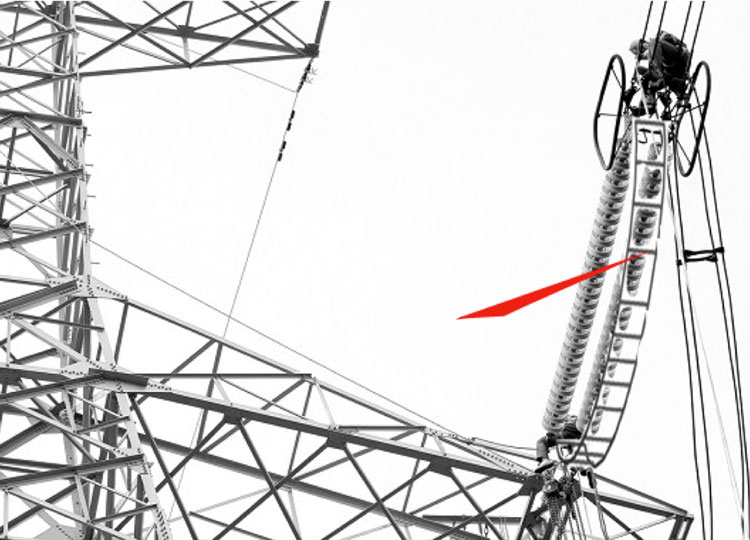
The first, referred to as the ‘hard ladder method’, sees a rigid ladder installed below the insulator string from tower to conductor. Because of the practical difficulty of mounting a long and heavy ladder up the tower, this technique seemed most applicable to shorter strings, as found on 110 kV or 220 kV lines. The second method, called the ‘soft ladder’ technique and regarded as ideal for 500 kV lines, sees a flexible ladder hung from the overhead ground wire down to the conductor. The maintenance worker then moves out over the ground wire (instead of the insulators), before descending to the conductor. A third alternative is a variation of this approach and involves a soft ladder hung from the tower to the end of the string.
Comparing these alternatives, the most convenient in each case will depend on line voltage as well as other factors such as finding a suitable point on the tower to locate the hard ladder. In northern parts of China, for example, there is less use of ground wires due to icing and the hard ladder method is best. It is worth noting that the problem of crossing an insulator string to perform repairs on the conductor is not necessarily restricted only to composite types. Feedback from maintenance personnel indicates that glass is also difficult to cross because it can be slippery. Another issue is whether or not the glass tension strings have been coated in RTV silicone to improve pollution performance since coatings risk damage from being stepped on. Therefore, the alternative methods proposed for composite tension insulators may also apply.
In the end, it is uncertain how measures to resolve the accessibility issue will impact even greater use of composite insulators in China. There remain two issues of concern: the first is a line safety issue since from the viewpoint of design there is still not much experience with where best to locate strings on different styles of tower. Each of China’s design institutes offered different opinions in the past. The second relates to lifetime. It is still not certain how long composite insulators last under Chinese service conditions. If they need to be replaced sooner than expected, this may result in some lines having to be shut down for relatively long periods.

